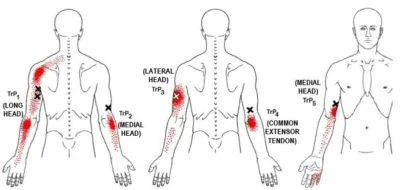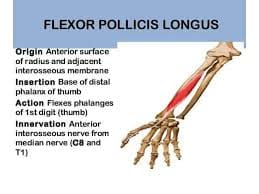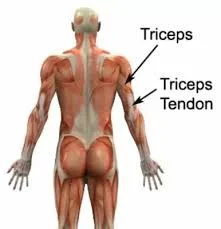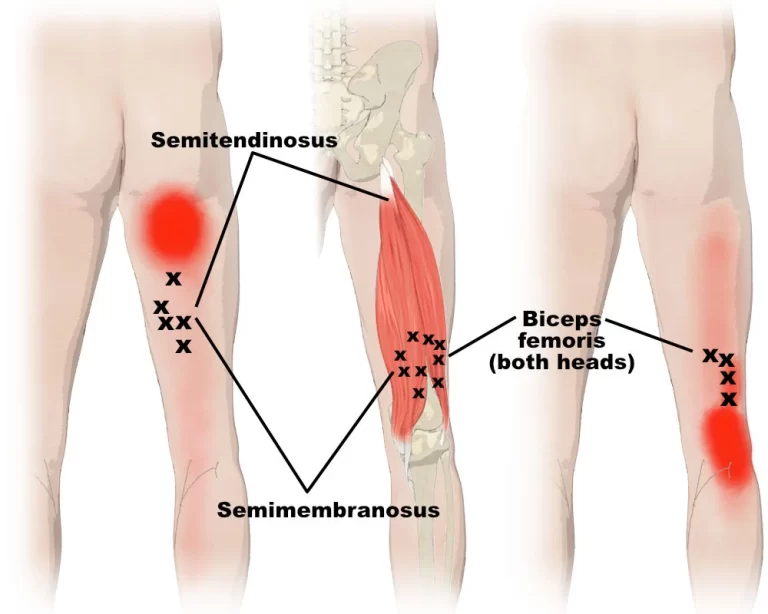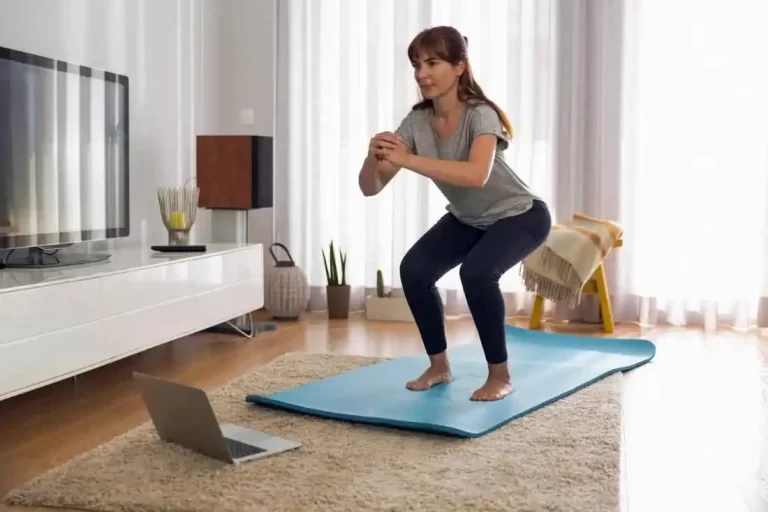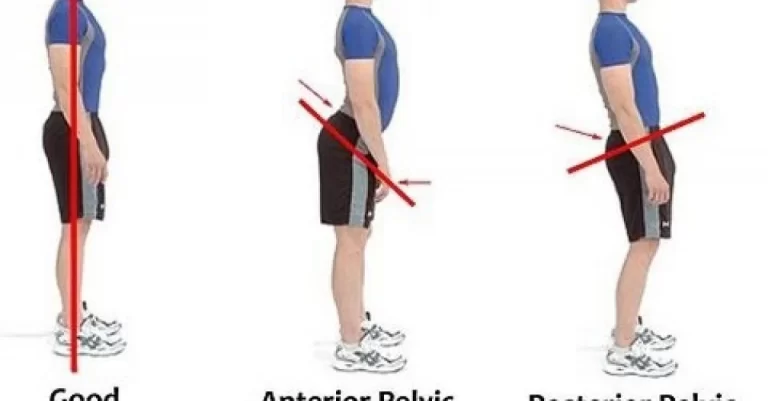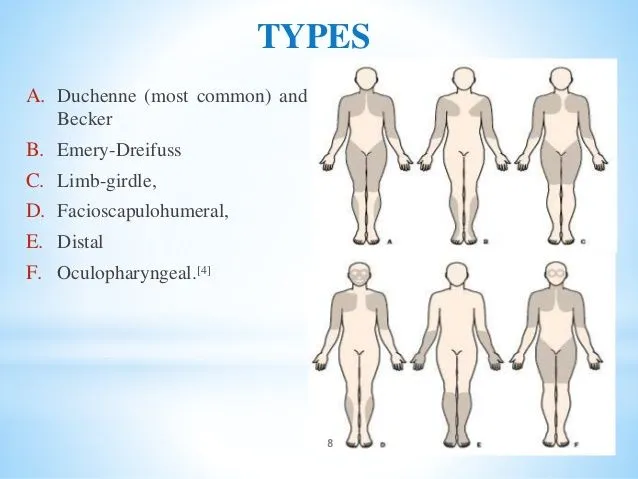Trigger Points in Triceps Muscle
Trigger points in the triceps muscle can cause pain and discomfort in the upper arm, elbow, and even down the forearm and into the hand.
What a Trigger Points?
Trigger points, additionally referred to as “skeletal muscle knots,” are extremely reactive and inflammatory regions of a muscle. Even while the triceps may be the source of the problem, the pain may also originate in the shoulder, elbow, or forearm since these locations of muscular tension can send pain to other parts of the body.
In essence, trigger points are tiny contractions in the muscle fibers that stay “stuck,” resulting in restricted oxygen supply, restricted blood flow, and an accumulation of waste products from metabolism.
This restriction might lead to a stressful and uncomfortable cycle. Without treatment, the trigger point may migrate to nearby muscle groups, tightening the muscle fibers and reducing general movement. Although acute trauma, such as a direct strike or pressure to the muscle, can also cause trigger points, tension, overuse, and poor posture are the main causes of trigger points.
Triceps Muscle Anatomy:
Origin:
Long head: scapular infraglenoid tubercle.
The term lateral head refers to the upper part of the posterior side of the humeral shaft, which is situated above and lateral to the radial groove.
The lower portion of the humeral shaft’s posterior surface (below and medial to radial groove) is known as the medial head.
Insertion:
the posterior portion of the ulna’s olecranon process.
Action:
elbow joint extension (straightening). The humerus can be adducted and extended from a flexed position by a long head. keeps the shoulder joint stable. The Biceps Brachii is the antagonist.
Nerve
Nerve radial, C6, 7, 8, T1.
How the Triceps Develop Trigger Points:
Overuse or repetitive strain, particularly during tasks requiring prolonged or vigorous elbow extension, is frequently the cause of trigger points in the triceps. Trigger points in the triceps can develop fast in those who regularly execute push-ups, bench presses, or overhead activities without enough rest.
In my experience, if done repeatedly over time, even seemingly routine tasks like pushing heavy doors, carrying large things, or typing for extended periods while holding the arms in a constant posture can cause triceps stress.
Particularly vulnerable to trigger points is the long head of the triceps, which passes through the shoulder joint. When a trigger point forms in this head, the pain usually radiates down the arm or to the back of the shoulder, causing discomfort that is easily confused with shoulder joint problems. I frequently encounter clients who think they have a shoulder issue only to find that it’s a triceps trigger point that’s causing the discomfort.
Incorrect posture, more specifically forward-head or rounded-shoulder positions also contribute to the emergence of triceps trigger points. These positions can cause compensatory strain on the triceps because they put additional effort on the shoulder-stabilizing muscles. Trigger points might develop as a result of the triceps overworking to support the shoulder joint and preserve equilibrium.
Symptoms of Triceps Trigger Points:
Identifying the signs of triceps trigger points might be challenging since the discomfort is not always localized. Tricleps trigger points can send pain to different parts of the body, resulting in:
- Pain in the shoulder area
- Elbow discomfort, especially in the area surrounding the elbow’s bony olecranon
- In extreme situations, pain may radiate from the wrist down the forearm.
- A feeling of constriction or weight in the upper arm, particularly while pressing or extending the arm
In my practice, I’ve encountered patients who believed they had rotator cuff difficulties, tennis elbow, or even nerve problems only to find out that a triceps trigger point caused their discomfort. Palpating the muscle and applying pressure is crucial for determining the precise trigger sites and referral patterns while evaluating triceps discomfort.
Treatment Methods for Triceps Trigger Points That Work:
There are several effective treatment methods for triceps trigger points, but I’ve discovered that a multimodal approach usually produces the greatest outcomes. The following are a few of my best techniques for addressing triceps trigger points:
Manual Trigger Point Treatment
Applying constant pressure to the trigger point until the muscle fibers start to relax is known as manual trigger point treatment. The thumb, fingers, or even a device like a massage ball can be used for this. It’s critical to identify the precise head of the triceps where the trigger point is located and apply consistent pressure, maintaining it there until the muscle starts to relax. In certain situations, this method can offer nearly instant relief and is especially useful for reducing referred pain.
Exercises for Range of Motion and Stretching
It is crucial to stretch to prevent and cure triceps trigger points. Easy triceps stretches, such as arm-crossing or overhead triceps extensions, can lengthen muscle fibers, improve blood flow, and relax stress. I always suggest mild stretching techniques to extend the muscle and stop the trigger point from reoccurring after manual therapy. Clients can also benefit from range-of-motion exercises to recover complete functionality, particularly if a muscle has grown tight or restricted as a result of ongoing tension.
Overhead Triceps Stretch
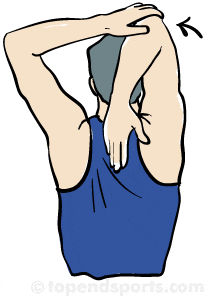
How can I stretch my triceps overhead?
Both standing and sitting are possible.
- The arm should be extended towards the ceiling with the palm pointing in front.
- Bend the elbow till the palm rests between the shoulder blades or in the center of the upper back.
- Now, gradually apply pressure to the flexed elbow with the other hand until the arm’s back feels a little stretched.
- Do this three to five times.
- Extend your right arm to the sky, then bend at the elbow to bring the right palm to the center of your back, putting the middle finger along your spine.
- Firmly push your elbow in towards the center with your left hand.
- Spend 30 seconds doing this stretch three or four times on each side.
Triceps Towel Stretch
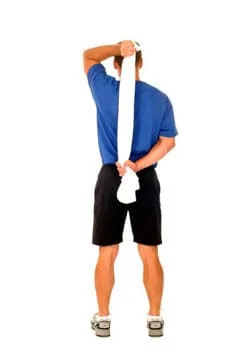
How is the towel stretch for the triceps performed?
- It’s a more intense variation of the overhead tricep stretch. To complete the stretch, one could need a belt, a bar, or a large towel.
- The individual can do this while standing or while seated on a stool.
- Holding the towel, bar, or belt, raise the arm so that it is extended above the head, much like in an overhead stretch.
- Using the reverse hand, grab the leading edge of the hand towel, bar, or belt.
- Grab the bottom end with the hand and pull as far down as you can without hurting.
- Hold for 20–30 seconds.
- Perform this at least two to four times.
Horizontal Triceps Stretch

How is the horizontal triceps stretch performed?
This stretch aims to target the lateral and posterior arm muscles more broadly.
- The person can perform this while standing or sitting with their shoulders relaxed.
- With the elbow slightly bent, adduct the arm to be extended on the other side to shoulder level.
- carefully grasp the arm apart from the elbow with the other hand.
- Hold for 20-30 seconds.
- Do this two to five times.
Triceps Kickbacks
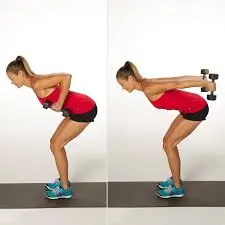
Between 85 and 90 percent of the triceps muscles are thought to be activated. The triceps muscle is under more strain since it is an antigravity action.
How are the triceps kickbacks performed?
- To do this, place one leg on an elevated platform or step. Put the same side’s forearm on the supported leg’s thigh to support the back.
- Raise the elbow to the abdomen while holding the weight in the other hand.
- Maintaining the position, stretch the arm behind you by contracting your triceps.
- First, perform 1–2 sets of 8–12 repetitions.
- If the elbow becomes unstable throughout the exercise, consider lowering the weight or doing it without any.
Overhead Triceps Extensions
This is the most effective exercise on our list and is said to cause at least 72-77% of muscle recruitment. It is regarded as one of the simplest and fastest triceps workouts.
How to perform an overhead triceps extension?
While carrying the weight over your head, elevate your hands and arms to the ceiling views. Lower the dumbbell behind your head and bend at the elbow to begin the repetitions. The arms of your upper body should stay in place while just your forearms move.
Foam rolling and myofascial release
The whole length of the triceps can benefit from myofascial release, especially when done with foam rolling. I frequently advise exerting pressure along the muscle with a foam roller or massage stick, paying special attention to especially sore regions. For people with several trigger points or widespread triceps tightness, this method may be beneficial. I provide appropriate foam rolling techniques to individuals who wish to take care of themselves to avoid needless strain or damage.
For individuals with intractable trigger sites that don’t improve with manual treatment alone, I commonly employ the dry needling approach. To aid in the release of the muscle fibers, dry needling involves inserting tiny needles straight into the trigger point.
I have frequently witnessed customers report a noticeable decrease in discomfort following just one or two sessions, and this method works particularly well for deep-seated trigger points in the triceps. However, because dry needling necessitates anatomical expertise and accurate needle placement, it should only be carried out by qualified practitioners.
Heat Treatment
For triceps trigger points, heat treatment may also be helpful, particularly if the muscle is extremely sensitive and taut. By boosting blood flow to the area, heating can help reduce pain and ease muscular tension. To increase the effectiveness of manual therapy or stretching, I frequently advise using a heating pad for ten to fifteen minutes beforehand. Customers frequently discover that taking a warm bath or shower helps ease triceps strain.
Tips for Prevention and Self-Care
For people who often perform arm-straining exercises, preventing tricep trigger points is just as crucial as treating them. I suggest the following tactics to athletes and clients:
Stretching should be a frequent component of your routine, especially after physical activity or other demanding upper-body tasks. Easy shoulder and triceps exercises will help keep you flexible and stop trigger points from developing.
Maintain proper posture. Steer clear of prolonged forward-head or rounded-shoulder positions since they may cause tricep tension. Muscle health may be greatly improved by keeping your spine neutral and paying attention to your posture throughout the day.
When exercising, use good form. When performing push-ups, bench presses, and triceps workouts at the gym, improper technique can put undue tension on the muscles. To make sure they’re lifting with the right form, I frequently suggest that clients consult a coach or trainer.
Include strength training. To prevent the triceps from overcompensating and creating trigger points, strengthening the rotator cuff and shoulder stabilizers can aid in distributing the effort across the upper body. A well-rounded practice should include exercises like face pulls, external rotations, and scapular stability exercises.
Think about using trigger points or massage instruments. Many of my clients find that self-massaging their triceps and surrounding muscles with massage products like foam rollers or trigger point balls helps them feel better. If they are unable to attend frequent sessions, these instruments enable them to work on their trigger points at home.
FAQs
How can tricep discomfort be relieved?
NSAIDs, rest, ice, and a sling or brace
How can your triceps be released?
Stretching the triceps
Sit or stand upright….
Keep your elbows in the same posture as you bend your arm and extend your hand behind your back.
Utilizing your other hand, gently press down on the bent elbow.
Do this two or four times.
Repeating these techniques with your second arm is a smart idea.
What signs of a tricep trigger point are present?
Depending on where the trigger points are located in your triceps, you may feel discomfort in your arm, shoulder, and upper back.
How can a trigger point be released?
It is possible to massage the muscle with your fingertips or a tennis ball. Using a foam roller is an additional option. A third party can feel for the trigger areas, or you can do it yourself. After locating them, you should push down on them for 20 to 30 seconds before letting go.
The tricep is affected by which nerve?
Running down the arm, the radial nerve provides activity to the triceps muscle at the back of the upper arm.
What trigger point is there for the triceps?
TrP1 is situated deep, in the center, and slightly towards the inside of the arm’s back in the long head.
Why do trigger points hurt so much?
Your muscles may have painful “knots” called trigger points susceptible to pressure or contact. They can develop as a result of repeated microtrauma or acute trauma, which puts stress on the muscle fibers.
References
- Trigger point pain from Triceps Brachii Trigger Point #One and how to find relief | Painalog. (n.d.). https://www.painalog.com/trigger-point-pain-from-triceps-brachii-trigger-point-one-and-how-to-find-relief/
- Triceps brachii muscle pain & trigger points. (2020, May 15). Muskel Und Gelenkschmerzen. https://www.muscle-joint-pain.com/trigger-points/trigger-point-self-treatment/triceps/
- Winer, J. (2022b, April 28). Treating the Triceps. Niel Asher Education. https://nielasher.com/en-in/blogs/video-blog/treating-the-triceps?srsltid=AfmBOopUo34-bGRMxE19SUEgCyVqOSaxXwU2MbSgHlKjG5QnOC0gDI3B
- Marks, D. (2024, November 7). Trigger Points and the Triceps Muscles. Niel Asher Education. https://nielasher.com/en-in/blogs/video-blog/trigger-points-and-the-triceps-muscle?srsltid=AfmBOorxQV55IRfEidSB6COPR6UnqwJaBBCHpkpwfzpEgx7R_J2SR0i3
- Pansari, Y. (2024, February 24). Triceps Muscle Pain – Cause, Symptoms, Treatment, Exercise. Mobile Physiotherapy Clinic. https://mobilephysiotherapyclinic.in/triceps-muscle-pain/#Physiotherapy_Treatment_for_Triceps_Muscle_Pain

